A new paper in the journal Sustainability has investigated the use of aluminum sludge for heavy metal contaminant remediation in wastewater. An international team of scientists from Algeria, Sweden, India, Australia, Saudi Arabia, and Tunisia have contributed to the research.
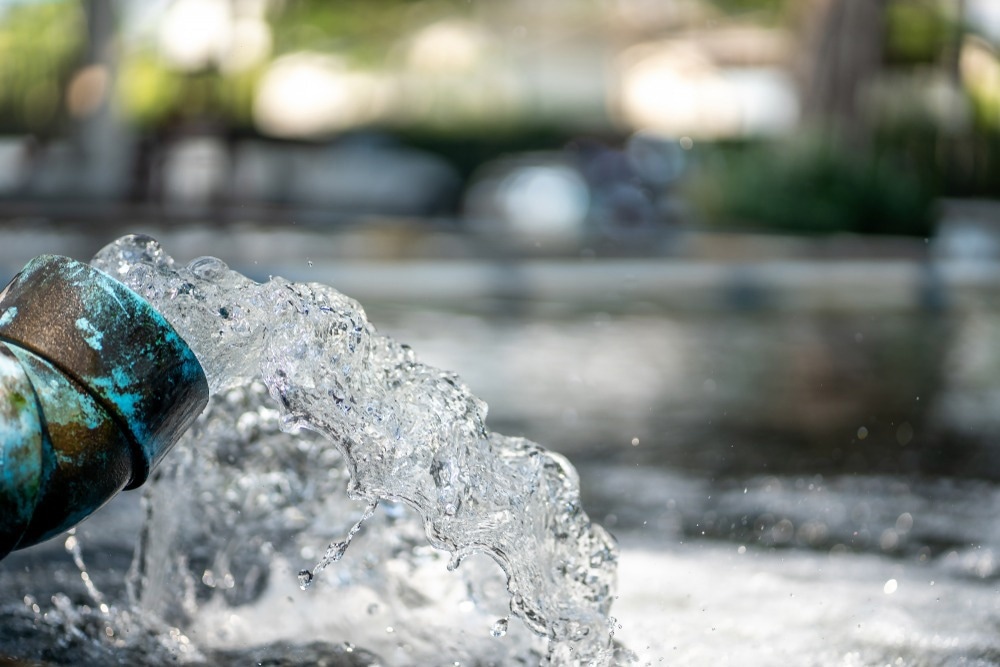
Study: Copper and Zinc Removal from Wastewater Using Alum Sludge Recovered from Water Treatment Plant. Image Credit: Poh Smith/Shutterstock.com
Heavy Metal Contamination of Wastewater
Domestic and industrial activity produces vast amounts of wastewater, which is an environmental hazard due to contaminants such as organic waste and heavy metals. Heavy metals in particular cause damage to people, animals, plants, and fragile ecosystems. Specific hazards of heavy metals include their bioavailability, carcinogenicity, and teratogenicity.
Several industries are affected by this key environmental and health issue, including steelmaking and mining. Moreover, illegal activities and dumping complicate efficient contaminant removal, with heavy metals entering waterways and aquifers in vast quantities annually across the globe.
Recognizing the scale of this issue, several international bodies, including the EU and WHO, have introduced recommendations and regulations to mitigate the impact of heavy metal contamination.
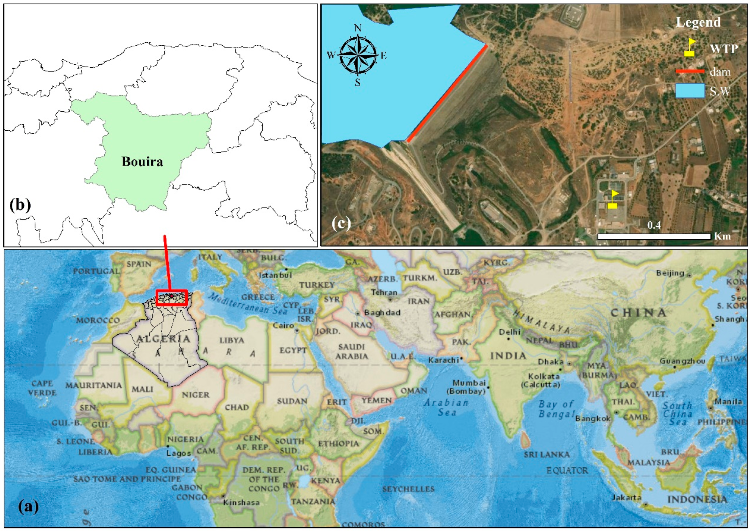
Map showing the sludge sampling location of the studied area. (a) Algeria; (b) Bouira city; (c)water treatment Plant. Image Credit: Abba, A.B et al., Sustainability
Remediation Strategies
In recent decades, several strategies have been investigated for the efficient removal of heavy metal ions from wastewater streams. Amongst the various methods proposed for widespread industrial and commercial application, adsorption processes have piqued the interest of researchers and organizations.
Whilst adsorption is a highly efficient removal method, some key challenges exist with current technologies. A common material used for this purpose is activated carbon, but there are drawbacks to this material in terms of production costs, separation difficulties, and regeneration.
Utilizing alternative, abundant natural materials is a key focus of research into adsorption strategies for treating wastewater. Industrial and commercial waste streams show particular promise in this field currently due to their availability, performance, cost-effectiveness, and the ability to valorize and convert them into value-added products rather than disposing of them in the environment.
Aluminum Sludge
Aluminum sludge is a by-product of drinking water treatment. Aluminum salts are added to water to remove particles such as colloidal particles and make it safe to drink. Once removed, these particles settle due to flocculation and coagulation processes and form sludge.
Currently, especially in developing countries, this sludge is disposed of in landfills and directly into rivers and waterways, causing ecological and water quality issues. Due to the problems caused by sludge disposal, economically-sound methods of safely disposing and reusing aluminum sludge to provide proper management of this critical waste material are essential.
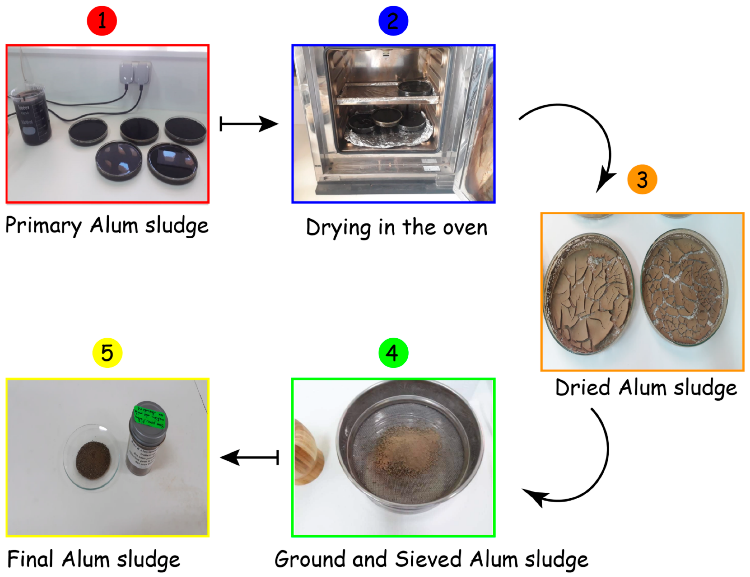
Schematic illustration of the preparation of Alum sludge sample. Image Credit: Abba, A.B et al., Sustainability
The vast quantities of sludge produced annually provide ample opportunities for value-added processes and the valorization of this material in line with circularity aims. One such use includes recovering aluminum itself from the sludge for industrial processes. Other opportunities exist with using this waste material in wastewater treatment.
Some studies have already explored the use of this material for heavy metal contaminant removal. Vast quantities of sludge and long contact times have been used, with a study by Ngatenah et al. demonstrating the efficient removal of copper and zinc ions, but at quantities of 2000 mg/L and with contact times of 25-180 minutes.
The Study
In the new paper, the authors have sought to evaluate the use of this industrial waste material for heavy metal contaminant removal from Algerian wastewater streams. They have stated that the use of this industrial waste could be more cost-effective than current adsorption technologies.
Specifically, the authors have investigated the use of this industrial waste material for the removal of copper and zinc ions from synthetic wastewater. Aluminum sulfate is commonly used as a coagulant in drinking water treatment in Algeria, providing several opportunities for the use of this valuable material for heavy metal ion contaminant remediation.
XRD and SEM were employed to analyze the aluminum sludge used in the study. XRD revealed the presence of kaolinite, with inadequate ordering of sludge. SEM revealed the amorphous nature of the material. FTIR was used to examine bonds and functional groups. A considerable quantity of organic matter was observed in the sludge, and it possesses a highly porous nature with a large surface area.
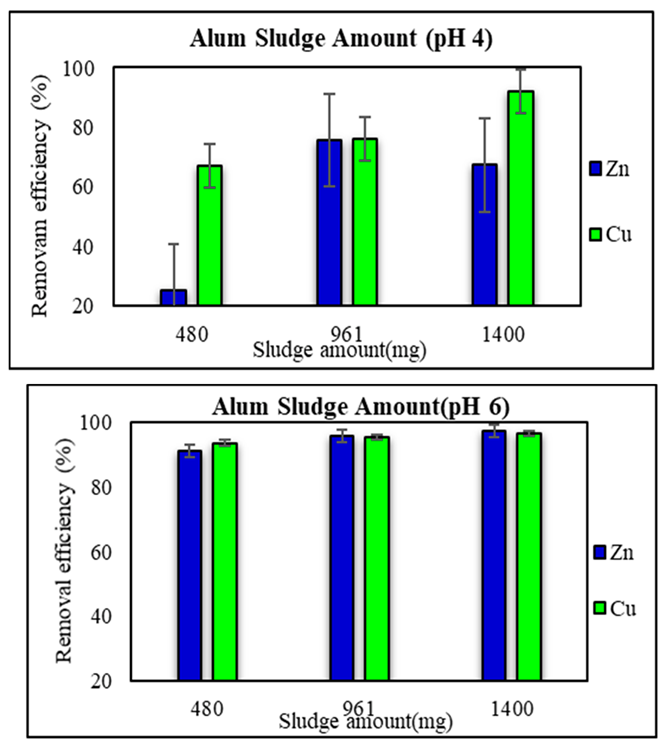
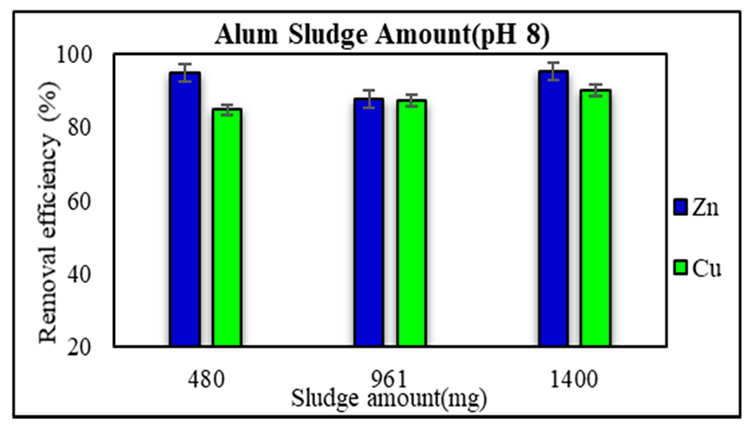
Effect of Sludge amount in Heavy metals removal in deferent pH mediums. Image Credit: Abba, A.B et al., Sustainability
Based on the study of sludge amount and pH, the authors concluded that these factors influence copper and zinc ion removal. Different intended uses depending on the amount and pH (industrial wastewater, drinking water treatment, wastewater) were suggested in the paper.
High removal efficiency for zinc ions and copper ions was observed, leading the authors to conclude that this material is suitable for heavy metal contaminant removal from wastewater.
In summary, the paper has demonstrated the beneficial use of aluminum sludge, a critical waste stream from drinking water treatment, for the large-scale removal of heavy metal ion contaminants from wastewater. The authors have suggested that future research could improve removal efficiency by considering the impact of time upon adsorption methods using this abundant, cheap, and renewable waste resource.
Further Reading
Abba, A.B et al. (2022) Copper and Zinc Removal from Wastewater Using Alum Sludge Recovered from Water Treatment Plant Sustainability 14(16) 9806 [online] mdpi.com. Available at: https://www.mdpi.com/2071-1050/14/16/9806
Disclaimer: The views expressed here are those of the author expressed in their private capacity and do not necessarily represent the views of AZoM.com Limited T/A AZoNetwork the owner and operator of this website. This disclaimer forms part of the Terms and conditions of use of this website.